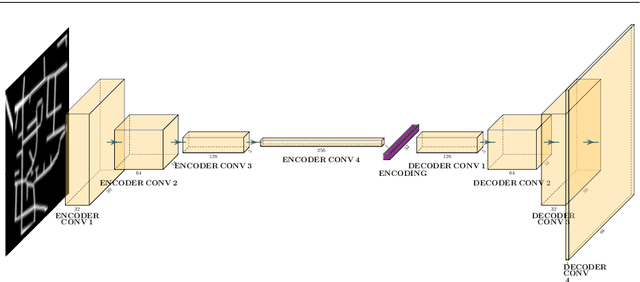Roberto Murcio
Graph representation learning for street networks
Nov 09, 2022Abstract:Streets networks provide an invaluable source of information about the different temporal and spatial patterns emerging in our cities. These streets are often represented as graphs where intersections are modelled as nodes and streets as links between them. Previous work has shown that raster representations of the original data can be created through a learning algorithm on low-dimensional representations of the street networks. In contrast, models that capture high-level urban network metrics can be trained through convolutional neural networks. However, the detailed topological data is lost through the rasterisation of the street network. The models cannot recover this information from the image alone, failing to capture complex street network features. This paper proposes a model capable of inferring good representations directly from the street network. Specifically, we use a variational autoencoder with graph convolutional layers and a decoder that outputs a probabilistic fully-connected graph to learn latent representations that encode both local network structure and the spatial distribution of nodes. We train the model on thousands of street network segments and use the learnt representations to generate synthetic street configurations. Finally, we proposed a possible application to classify the urban morphology of different network segments by investigating their common characteristics in the learnt space.
Modelling urban networks using Variational Autoencoders
May 14, 2019



Abstract:A long-standing question for urban and regional planners pertains to the ability to describe urban patterns quantitatively. Cities' transport infrastructure, particularly street networks, provides an invaluable source of information about the urban patterns generated by peoples' movements and their interactions. With the increasing availability of street network datasets and the advancements in deep learning methods, we are presented with an unprecedented opportunity to push the frontiers of urban modelling towards more data-driven and accurate models of urban forms. In this study, we present our initial work on applying deep generative models to urban street network data to create spatially explicit urban models. We based our work on Variational Autoencoders (VAEs) which are deep generative models that have recently gained their popularity due to the ability to generate realistic images. Initial results show that VAEs are capable of capturing key high-level urban network metrics using low-dimensional vectors and generating new urban forms of complexity matching the cities captured in the street network data.
 Add to Chrome
Add to Chrome Add to Firefox
Add to Firefox Add to Edge
Add to Edge